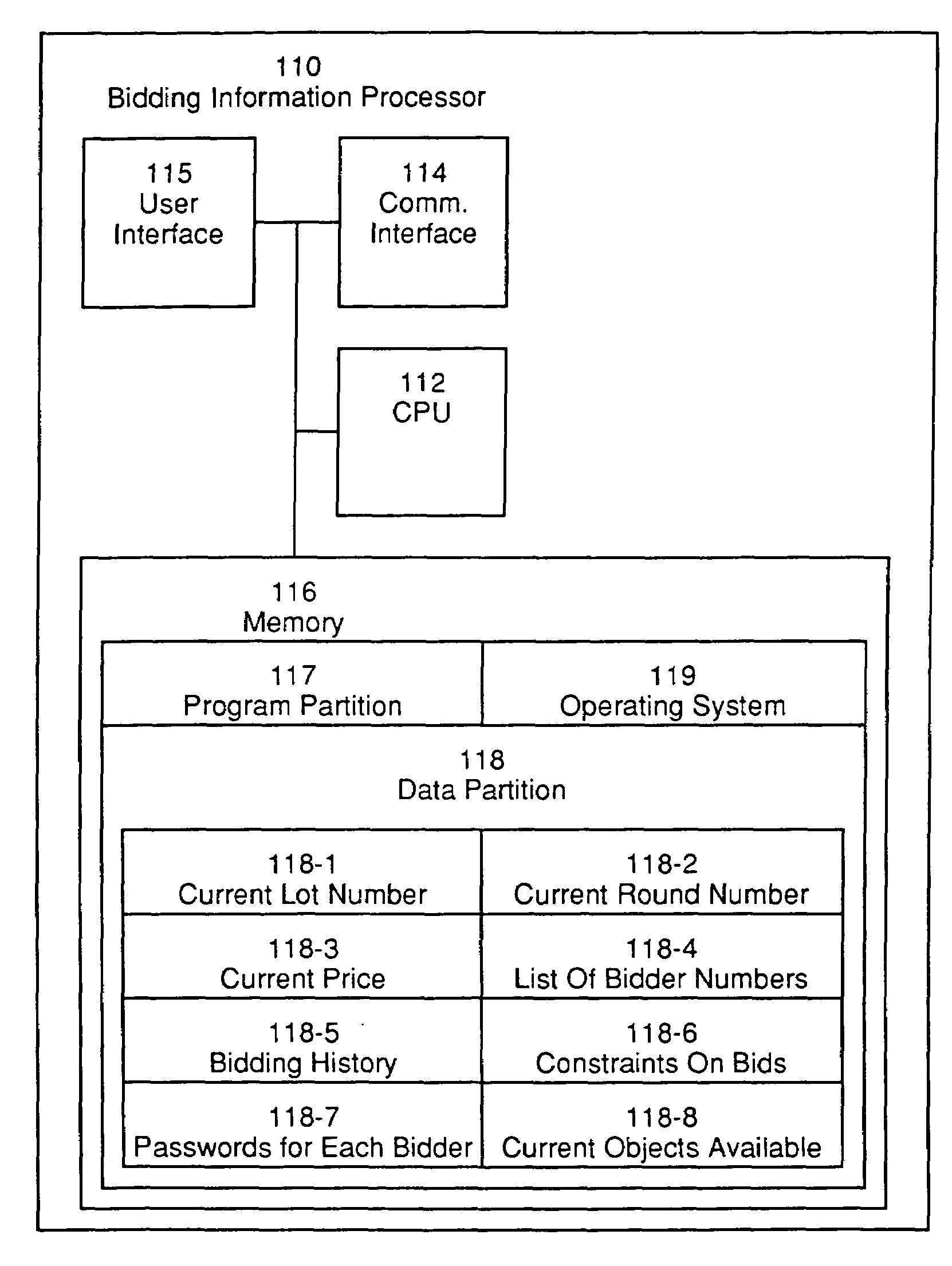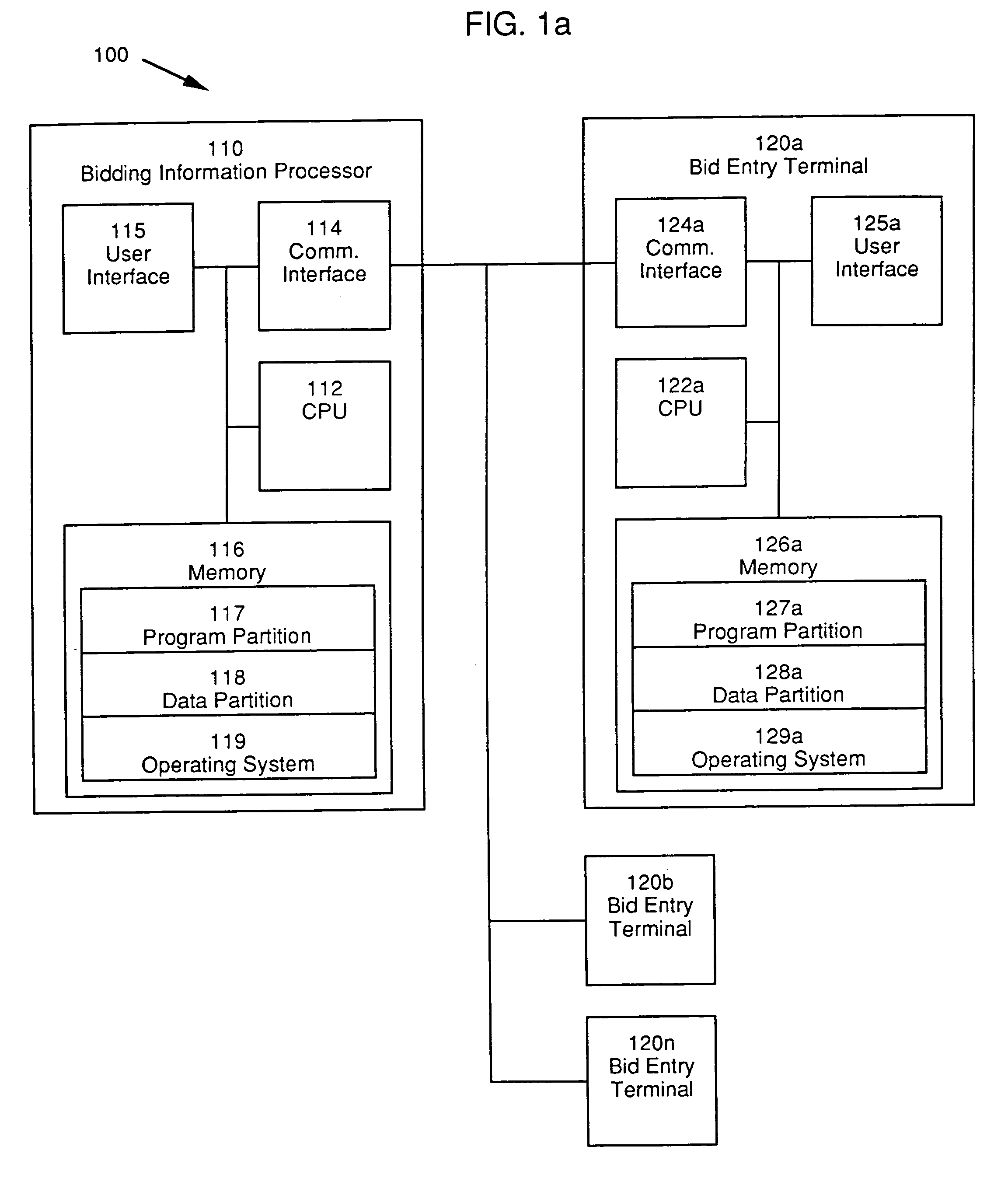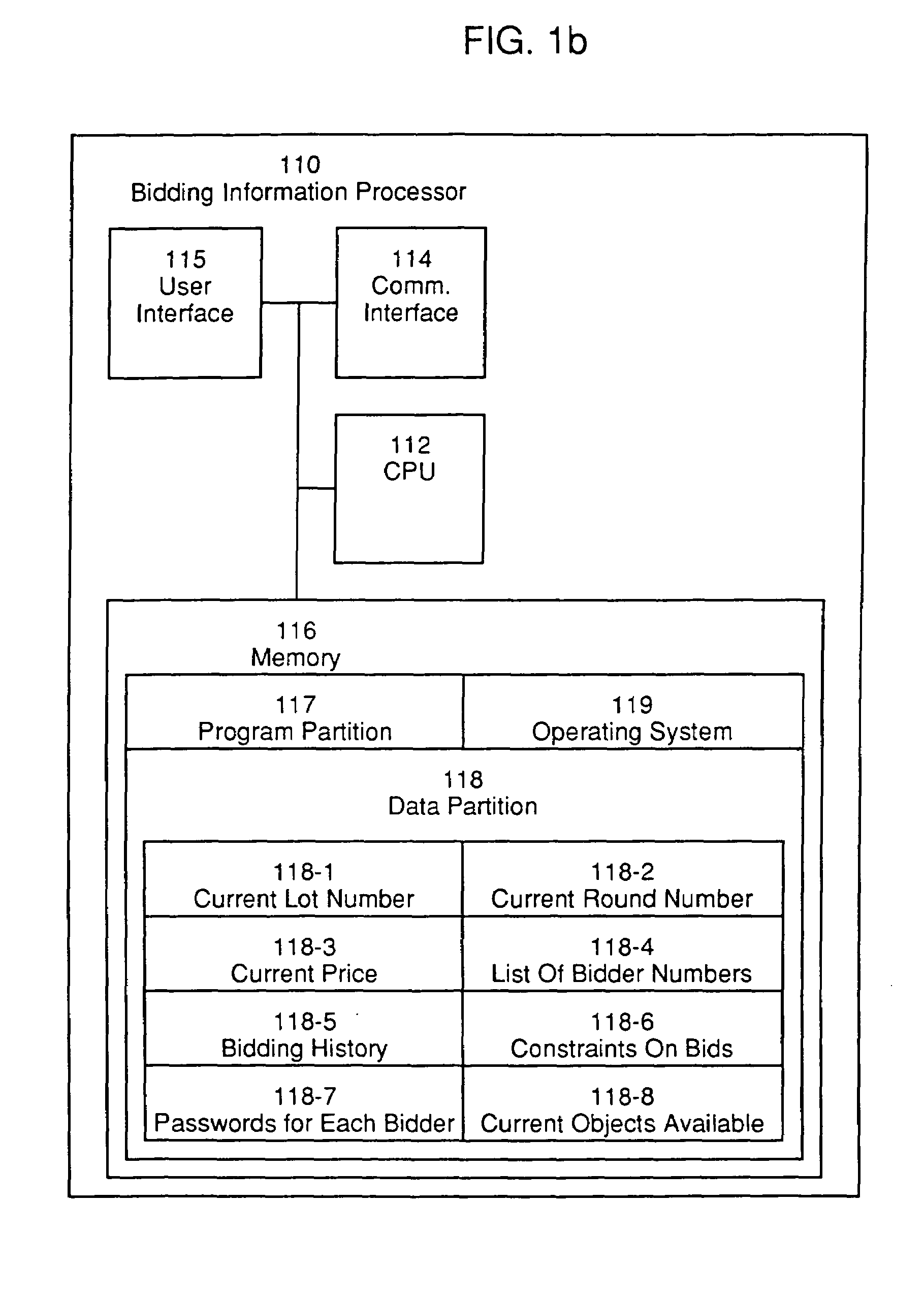Ascending bid auction for multiple auctions
a technology of auctions and auctions, applied in the field of automatic auctions, can solve the problems of inability to respond to the bid of their competitors, inability to infer information, and inability to respond to the common-value information in subsequent bidding, so as to improve the economic efficiency of the auction design and ensure the confidentiality of high values
- Summary
- Abstract
- Description
- Claims
- Application Information
AI Technical Summary
Benefits of technology
Problems solved by technology
Method used
Image
Examples
Embodiment Construction
[0029]FIG. 1a is an exemplary block diagram of one embodiment of the present invention. System 100 includes Bidding Information Processor (BIP) 110 and a plurality of Bid Entry Terminals (BET) 120a-n. The invention is implemented by the system of BIP 110 and a plurality of BETs each operating as will be described in the following portions of the specification. Each BET 120 is communicatively coupled to BIP 110 over communication system 130. A typical Bid Entry Terminal (BET) is represented by BET 120a. BET 120a includes CPU 122a which executes program instructions which carry out the sequence of steps of the present invention. BET 120a includes communication interface 124a, which transmits and receives signals over communication system 130 under control of CPU 122a. These signals represent messages generated by CPU 122a and messages destined for CPU 122a. BET 120a includes memory 126a, which stores program instructions and data used by CPU 122a. Memory 126a includes program partitio...
PUM
 Login to View More
Login to View More Abstract
Description
Claims
Application Information
 Login to View More
Login to View More - R&D
- Intellectual Property
- Life Sciences
- Materials
- Tech Scout
- Unparalleled Data Quality
- Higher Quality Content
- 60% Fewer Hallucinations
Browse by: Latest US Patents, China's latest patents, Technical Efficacy Thesaurus, Application Domain, Technology Topic, Popular Technical Reports.
© 2025 PatSnap. All rights reserved.Legal|Privacy policy|Modern Slavery Act Transparency Statement|Sitemap|About US| Contact US: help@patsnap.com



